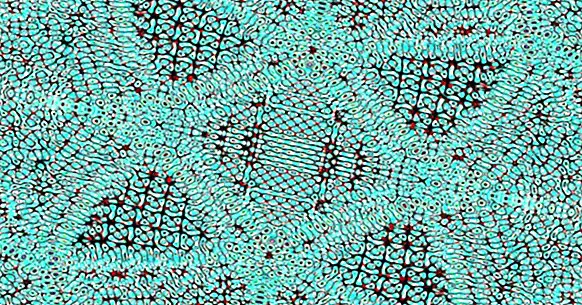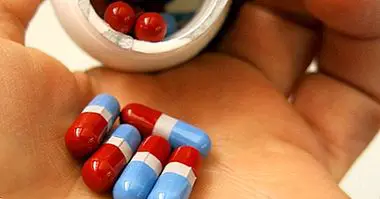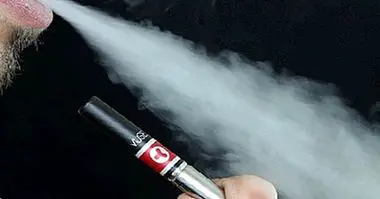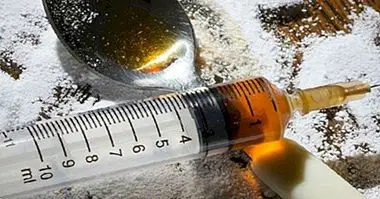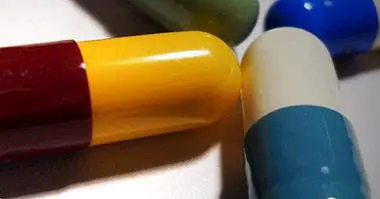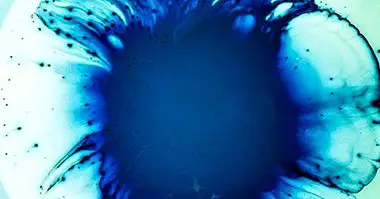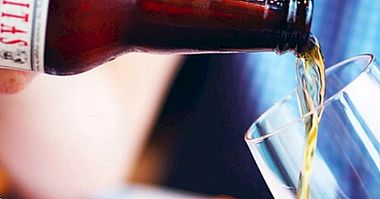DMT: effects and mechanism of action of this substance
DMT is a psychoactive substance with potent hallucinogenic effects . It is a compound present in different plants, and to a lesser extent in the brain of mammals. Likewise, it is an element that has been used frequently in mystical and spiritual rituals over time. In recent times, its use has also been transferred to pharmacology in different psychiatric treatments.
Next we will see what the DMT is, what are its main effects and what is its mechanism of action.
- Related article: "Types of drugs: know their characteristics and effects"
What is DMT?
DMT stands for the N, N-dimethyltryptamine, a chemical substance with powerful hallucinogenic properties that is obtained from vegetable substances . Its consumption can be in the form of extract, or as a refined synthetic. In the latter case, the product is a small solid that, in general, has a white color; although when mixed with other substances for illegal sale it can have different colors.
This substance is consumed orally, either by intake or by inhalation (ie, smoked). In both cases, its effects are perceived almost immediately, although when consumed by inhalation, its effect is faster and prevents the possible adverse reactions involved in its absorption by the stomach at the time of intake.
As it is a component that can be found in one or more plant elements, the DMT it is considered as an entheogenic substance . One of these elements is, for example, the psychotria vidris or chacruna, a plant that is used to prepare ayahuasca or yagé (traditional indigenous drink used by several American peoples).
Likewise, and in small proportions, DMT is produced by our own brain, which is also considered an endogenous chemical. On the other hand, DMT belongs to the pharmacological category of tryptamines, which are alkaloids with neuromodulatory effects.
Finally, because of its effects on the body, DMT is considered a hallucinogenic psychoactive substance. That is to say, Its main effect is to produce hallucinations , with special existential and mystical content. For this very reason it is also known as "the molecule of God".
- Maybe you're interested: "The story of the doctor who tried to treat his depression by smoking DMT every day"
Mechanism of action
DMT acts by inhibiting an enzyme called monoamine oxidase (MAO). That is, it is activated when another substance prevents the MAOs from acting within the organism. This is because this enzyme, MAO, has as its main function to inactivate or degrade some neurotransmitters, among which is Dopamine, serotonin, noradrenaline, adrenaline , and also the DMT.
Stated differently, when monoamine oxidase activity is inhibited, DMT levels are also prevented from gradually decreasing. Thus, for DMT to have its effects, it must be mixed with a substance that is inhibiting monoamine oxidase (MAOI).
Some substances that act as MAOIs are beta-carboline class alkaloids, present in plants such as Cape vinca, English grass, or fescue arundinacea. On the other hand, the plants that contain DMT (whose analog in pharmacology is the group of the tryptamines) are the chacruna or the chaliponga.
In short, for DMT to have its effects, it is necessary mix this tryptamine with some MAOI substance . For this reason, DMT is usually consumed together with drugs of this type, originally used for the treatment of depression. When mixed, the effects of DMT are enhanced and lengthened, although these usually last no longer than 30 minutes.
However, DMT can also be consumed without the need for IMAO substances and drugs, having an imperceptible effect. It is rapidly metabolized in the body and its consumption without MAOIs does not generate tolerance, probably due to its endogenous and entheogenic nature.
- Maybe you're interested: "MAOIs (monoamine oxidase inhibitors): effects and types"
Three main effects and uses
The effects of DMT usually last between 5 and 30 minutes and are mainly hallucinations of various types. Although these effects have a short duration, the experiences they provoke are usually very intense. Likewise, DMT has been related to brain activity and the pharmacological treatment of some psychiatric diagnoses . Following the above, we will see three of its main effects below.
1. Hallucinations
As we have said, the main effect of DMT is to provoke hallucinations, both visual and auditory and sensory, with a fairly elaborate mystical content. For example, may include extrasensory or non-verbal communications with different beings or perception of having made astral travel.
Also, prolonged use and high doses can induce manic and psychotic episodes, or an increase in the symptoms associated with these states. Similarly (and as is often the case with psychoactive substances), it can generate abstinence syndromes in the face of a sudden withdrawal.
- Related article: "Hallucinations: definition, causes, and symptoms"
2. Hypothesis about its role in the brain
The functions of this substance in the brains of humans and animals continues to be a mystery. Some hypotheses argue that is involved in dream experiences , that is, in the visual effects developed when we dream. Likewise, some hypotheses say that it can serve as a precursor of experiences close to death. This last is another reason why it is considered as "the molecule of God" or "molecule of the spirit".
3. Medical use
In the same way, this substance has been related to some neurodegenerative medical conditions, due to its activity in the Sigma-1 receptor (a protein found in a large part of the central nervous system). For the same reason its use has been significantly related to different psychiatric diagnoses such as schizophrenia , and also with the treatment of depression.
The latter may be related to an increase in the global connectivity of some areas of the brain, as well as an enhancing effect of neurotransmitters such as serotonin, associated with mood states euphoric, although there is no consensus of the scientific community on this.
Bibliographic references:
- Brown, T .; Shao, W .; Ayub, S .; Chong, D. & Cornelius, C. (2017). A Physician's Attempt to Self-Medicate Bipolar Depression with N, NDimethyltryptamine (DMT), Journal of Psychoactive Drugs. Taylor & Francis Group. United States of America.
- Miliano, C., Serpelloni, G., Rimondo, C., Mereu, M., Matteo, M. and De Luca, MA. (2016). Neuropharmacology of New Psychoactive Substances (NPS): Focus on the Rewarding and Reinforcing Properties of Cannabimimetics and Amphetamine-Like Stimulants. Front Neuroscience, 10: 153.
- Sánchez-Monge, M. (2016). The journey of LSD from the counterculture to the treatment of psychiatric pathologies. Medical Journal, Madrid. Retrieved September 11, 2018. Available at //www.diariomedico.com/especialidades/salud-mental/el-viaje-del-lsd-desde-la-contracultura-al-tratamiento-de-las-patologias-psiquiatricas.html .
- Wallach, JV. (2009). Endogenous hallucinogens as ligands of the trace amine receptors: a possible role in sensory perception. Med Hypotheses, 72 (1): 91-94.

